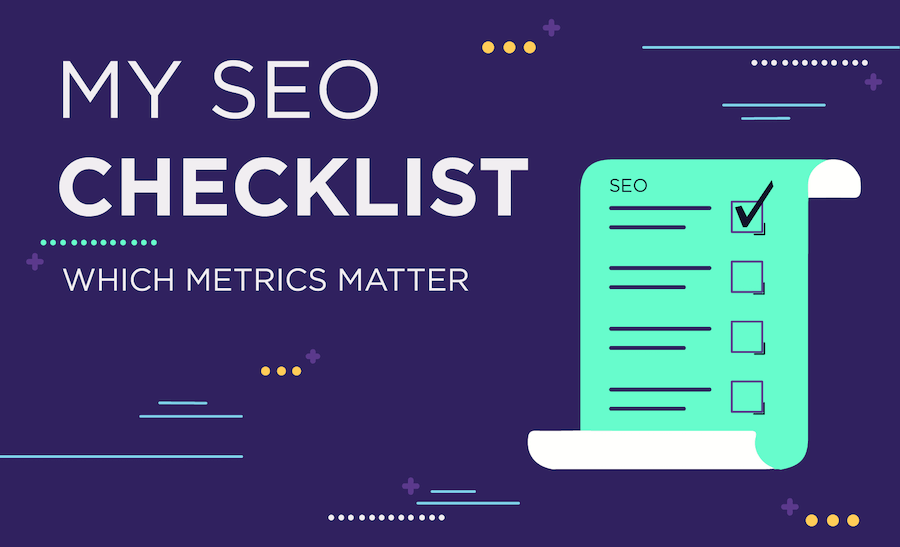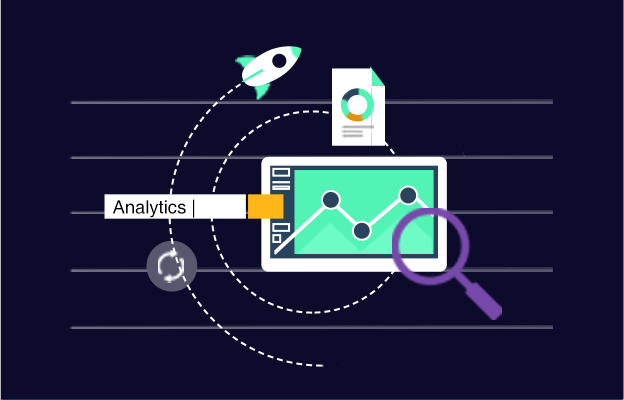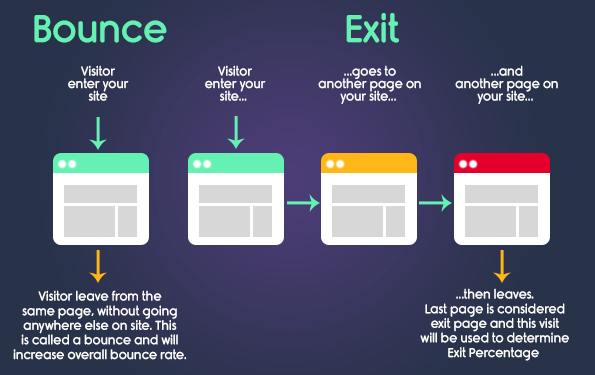My SEO Checklist

Which Metrics Matter
Every strategy should be tailored to the business but here is an intro to approaching the metrics that every SEO strategy uses.
My goal with organic traffic is to increase quality traffic to a website that brings leads/sales without spending advertising dollars. I’ve put together an SEO Checklist of metrics that I use to help build my digital content strategy and has helped me increase organic traffic. Every strategy should be tailored to the business but here is an intro to approaching the metrics that every strategy uses.
We as marketers are in a constant panic as to whether or not we are presenting our companies best-self on the internet. As an SEO strategist, not only am I concerned with how our audience is digesting our content but also how google is evaluating it. To best understand the health of your website and whether your content is earning its keep, it’s wise to have a good grasp of your websites metrics. With there being so many metrics available it can certainly be a bit daunting to decide which you should be tracking and giving attention to. An SEO checklist can help you prioritize your efforts and help strategize your content moving forward.

PRO TIP: before you even open up your website’s Google Analytics and run a report you should know what you are trying to solve or what you are trying to understand. There are endless variations of metrics you can generate, but unless its solving a problem you’ll never be able to strategize a solution.
There are two general areas I am pulling different sets of data from, the website as a whole and specifically the blog. These areas help me understand the health of a websites organic traffic. The data points below make up the SEO Checklist I run weekly and monthly reports on. By piecing together all the data points in my checklist I can have a better grasp as to what the traffic is saying. Google has shaped the language of search and so their terminology can sometimes just make things more confusing (ex. Bounce rate vs. Exit rate), with that in mind I have included some definitions that I feel best explains its application.
General Website
The metrics I pull from GA to assess web health
New User/User:
“users” is the number of new and returning people who visit your site during a set period of time. The first time a person visits your site, a Google Analytics cookie will be set and a unique identifier will be assigned to them. This will help distinguish the person as a “new user”

Pageviews/Visits:
“A page view is a visit to a page on your website. … If the user navigates to a different page and then returns to the original page, this will count as another page view. A visit is defined as a sequence of consecutive page views without a 30-minute break. A visit always contains one or more page views.”
Once you understand what the baseline of users visiting your site is you can then start exploring how that translates to pageviews. The end goal to your website is not to just have high traffic but rather traffic that is consuming the content you are putting out. One user should be hitting many pages in order to be a valuable digital consumer. The more your pageviews climb the better your content needs to be. There are a lot of “quick tips” out there that will help get your visitor to other pages but having quality content will inevitably be what gets visitors around your site.
Duration:
Average session duration is: total duration of all sessions (in seconds) / number of sessions.
Every website I work with I try my best to understand the audience that it’s interacting with. There are so many contributing factors that go into how long it takes your users to consume your content. For example, some websites are in a niche where there really just isn’t a great deal of quality content online about (15% of searches made on Google have never been searched before). This could mean if you’re providing quality content they will be really spending the time to hear what you have to say which would increase your duration. For the general health of a website its good practice to try and extend how long your user is interacting with your website.

Bounce Rate/Exit Rate:
For all pageviews to the page, Exit Rate is the percentage that were the last in the session. For all sessions that start with the page, Bounce Rate is the percentage that were the only one of the session. Bounce Rate for a page is based only on sessions that start with that page.
Funnels Tracked/Direct & Organic:
Direct traffic can include visits that result from typing the URL directly into a browser, as the simple definition suggests. Organic traffic, on the other hand, are those visits which are tracked by another entity — usually because they have arrived through search engines — but also from other sources.
High quality organic traffic is the endgame goal of every SEO strategist. The more keywords I get content ranking for on pages 1-3 on google the higher my organic traffic. Over time the better your content is that organic traffic will convert into direct traffic as now they know your website. When you are pushing out quality content that people was to read they are then associating your brand with that quality. And I have two words for organic traffic volumes; quality converts.
Blog
The metrics I pull to evaluate the blog and generate content ideas
Having worked with many websites that have a diverse variety of content topics I’ve found that not one blog will check every box. By diversifying the themes of content in your blog you can try and have the variety of blogs as a collective perform well for Google’s search bot. Choosing the variety of topics should be lead by how your user is interacting with the internet. Find themes that are regularly bringing your website traffic as that is your ‘Evergreen Content’. Blogs filled with evergreen content are healthy and lead to higher conversions.
PRO TIP: before you even open up your website’s Google Analytics and run a report you should know what you are trying to solve or what you are trying to understand. There are endless variations of metrics you can generate, but unless it’s solving a problem you’ll never be able to strategize a solution.
I review blog metrics every two weeks to keep the data standardized, with a set period of time you can start developing patterns. When a blog is published and released to the vast internet (if of great quality and is search optimized) I typically find it takes four months to rank on page one of google. As your blog climbs the rank the greater the pageviews climb, pageviews equate to brand awareness.
In addition to pageviews I keep an eye on the ‘Bounce Rate’, ‘Conversion Rate’ and ‘Click Through Rate’ (CTR). Depending on the theme and aim of the blogs content some of these numbers might have greater weight to it. If the blog I wrote was intended to link to a new product or feature then I would want to be closely watching whether it turned into a conversion. Bounce Rates are usually higher for a blog as typically once they consume the content they were promised from the keyword they leave. That leads me into CTR, its smart to give your user the opportunity to consume other content you’ve created, content that might also direct them to your product! If you are writing your content in themes it shouldn’t be hard to drop some hyperlinks into other similar content on your website which in turn increases your CTR.

Our digital footprint impacts our brand, targeting quality audiences that have a higher propensity of interaction with our website increases our web health. Organic gains can always be strategized once a websites health is on track. Google is always changing how it analyzes websites and so there will always be new best practices that we as SEO strategists need to be privy to. Though there are always new tools the baseline always remains, quality content converts. Having a SEO checklist that keeps your metrics simple makes it easier to experiment with new strategies to gain more digital consumers. Understanding your metrics and having a goal to reading those metrics elevates your potential for higher lead generating opportunities.
All SEO strategists have a different approach to their content but this is the SEO checklist that I have found really has been working for me and the websites I’ve worked on. I hope you can take some of my approaches and tweak them into your own strategy and of course if they work for you, reach out and share how it worked with me!


